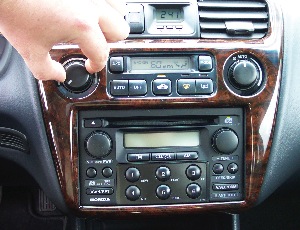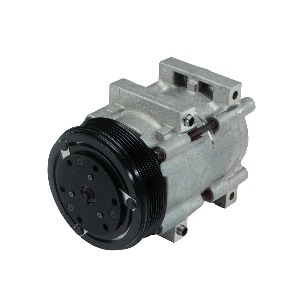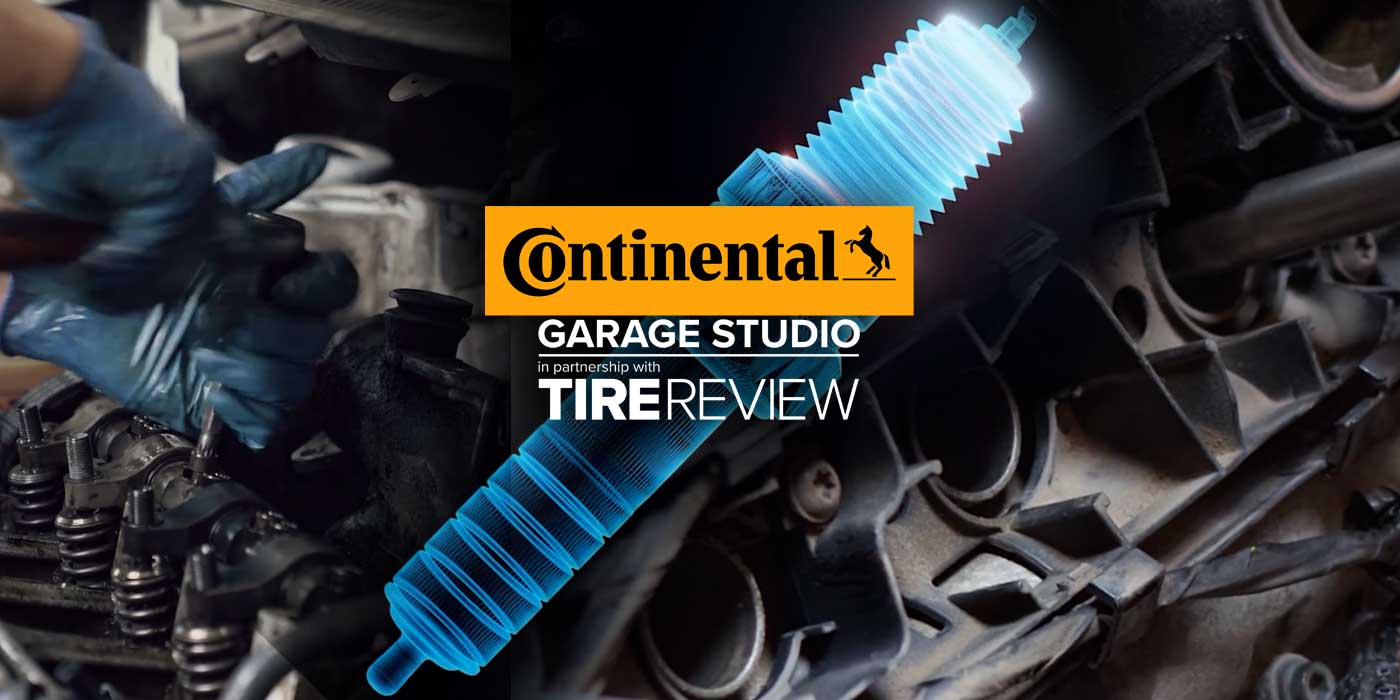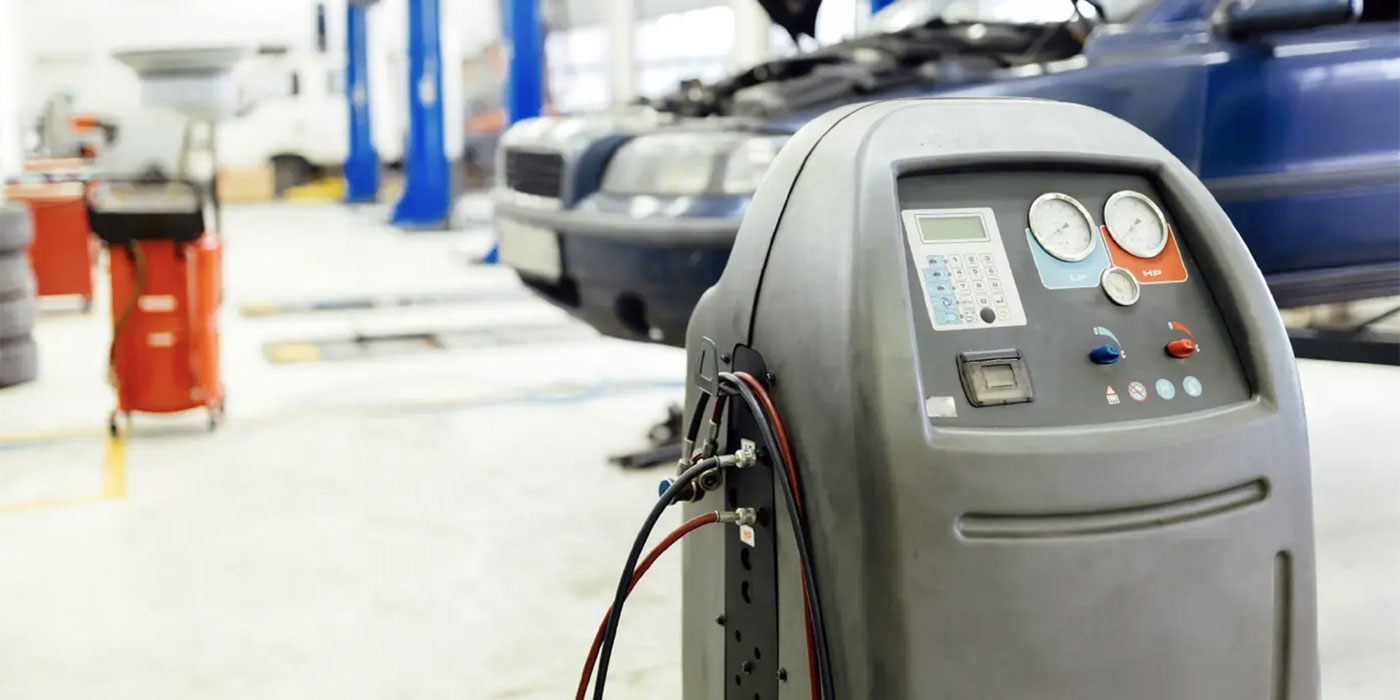As vehicle owners in many parts of the country begin using their air conditioning systems for the first time this year, some will be surprised to find their A/C system is not functioning properly or isn’t blowing out cold air like the summer past.
Here is a recap of common A/C system problems.
A/C compressors are usually the most expensive A/C component to replace, followed by condensers and evaporators. So it’s very important to make sure that 1) the compressor really is bad and needs to be replaced, 2) the cause of the compressor failure has been identified and fixed so the new compressor does not fail for the same reason, and 3) the new compressor is installed properly and lubricated with the correct type of compressor oil.
The most common cause of compressor failure is inadequate lubrication. This may be the result of a refrigerant leak that allows compressor oil to leak out of the system. Typical leak points are hoses, hose and pipe connections (O-rings and flange gaskets), the evaporator, condenser or the compressor shaft seal. Leak detection dye or an electronic leak detector should be used to find the leak so it can be repaired.
Lubrication problems can also be caused by a blockage (typically the orifice tube) that prevents refrigerant and oil from circulating through the A/C system.
Using the wrong type or wrong amount of compressor oil for the application can also lead to premature wear and failure. There are various grades of PAG oil, and using the wrong grade can cause problems. Always use the type of PAG oil specified by the compressor manufacturer or vehicle manufacturer. Use only the amount specified for the compressor, as adding too much oil can cause cooling problems.
Mineral-based compressor oil is only for older vehicles (pre-1995) with R-12 compressors, and should never be used with a compressor in an R-134 A/C system.
A compressor may also fail if there is sludge or debris inside the A/C system. Moisture contamination of the refrigerant can form acids that attack metal surfaces and form sludge inside the system. Over time, this can gum up and damage the compressor.
If the system contains any sludge or debris, the hoses, evaporator and condenser should all be flushed out to remove the contaminants. Note: Some condensers cannot be flushed due to the way they are constructed, so replacement is necessary if the condenser is contaminated.
A compressor may also have to be replaced if it’s leaking, making excessive noise or not working correctly because of an internal valve or piston failure.
Some compressors are naturally noisier than others, but loud knocking noises can sometimes be caused by air in the system. The cure in this case is not to replace the compressor, but to recover the refrigerant from the system, then vacuum purge the system for 30 to 60 minutes with an A/C vacuum pump to remove the unwanted air. If the compressor is still making noise after the system has been purged and recharged, it probably needs to be replaced.
When a compressor fails, it may spew out metallic debris. Most of the junk ends up in the condenser, but some may travel as far as the orifice tube or be blown back into the suction hose. If this debris is not flushed out of the system, it can be sucked into the new compressor and cause it to also fail.
Additional Parts Replacement
When a compressor is replaced, the accumulator or receiver/drier should also be replaced. The accumulator or receiver/drier contains a bag of desiccant that absorbs moisture. This helps to protect the A/C system against sludge. But, over time, the desiccant becomes saturated and cannot hold any more water. If the A/C system has been opened up for repairs, or has lost its charge of refrigerant, humidity in the outside air can enter the system and overload the desiccant. That’s why it needs to be replaced.
Another component that should be changed when replacing a compressor is the orifice tube. This small plastic tube meters refrigerant into the evaporator. If it plugs up, it can block the flow of coolant, causing the A/C to stop blowing cold air. It can also starve the new compressor for lubrication because the oil circulates with the refrigerant.
A couple of preventive measures can also be taken to protect a new compressor. One is to install an in-line filter in the high-pressure liquid line to catch any debris that might come out of the condenser. Another is to install an inlet screen filter in the suction hose to stop any debris from being sucked into the compressor.
Other A/C components that may also have to be replaced when changing a compressor include the magnetic clutch (if it is worn or slipping), the drive belt and A/C hoses. Refrigerant that contains leak detection dye can be used to recharge the system. After the dye circulates awhile, it will reveal any leaks that might have been missed and need to be repaired.
Fighting A/C Odor
Air conditioner odor complaints seem to keep coming back no matter what treatment your customers try, right? The reason is that most odor treatments are short-term, while the source of A/C odor is a combination of factors, including airborne microorganisms that naturally repeat over time.
Many products that are offered to control odor, such as disinfectants, may have a relatively effective initial application. Unfortunately, even the strongest disinfectant leaves no long-term, residual protection against the inevitable repeat odor infestation.
Air conditioning odors typically result from uncontrolled growth of bacteria and other microorganisms in the evaporator. Research by independent laboratories has found fungi such as aspergillus, cladesporium, penicillium and others growing on cooling coils and other A/C system areas.
How do these microorganisms get there? They are naturally present in outdoor air, and are drawn into the evaporator during air conditioner operation.
Moisture also contributes to A/C odor formation. Most of the moisture that condenses on cold surfaces inside the system drains harmlessly over time.
However, some moisture continues to cling to coil surfaces after the A/C shuts down.
Microbial contaminants in the air combine with this lingering moisture in the evaporator. The warm, dark and moist conditions in the evaporator provide an ideal breeding ground for bacteria, mold and mildew to grow and generate musty odors.
As vehicles were downsized (while also increasing their glass content), A/C system manufacturers reduced evaporator size while simultaneously increasing fin count. These densely packed evaporators trap and hold more moisture.
To see this for yourself, dip your hand into a glass of water. As you remove your hand from the water, quickly spread your fingers apart. No water will bridge the gap between your fingers. Dip and remove your fingers again, this time spreading them slowly to only a fraction of an inch apart. Water will bridge the smaller gap between your fingers, and remain far longer than if you open your fingers wide.
Ways To Reduce A/C Odor
Some treatments are merely feeble attempts to cover up odor. Almost all odor treatment products fail to provide a long-term cure that can reduce the recurrence of odor. Here is a brief description of the performance capabilities of various odor treatments by product type.
• Perfumes/Fragrances: Are designed to cover up odor with another, more acceptable scent. Can be time-release agents. Cover-up perfumes and fragrances cannot eliminate odor-causing microorganisms.
• Disinfectants: Destroy odor-causing microorganisms on contact. The typical liquid disinfectant quickly evaporates or washes out of the system along with the condensation that forms during A/C use. The next time airborne bacteria enters the system, odor can begin again. For this reason, disinfectants can require frequent repeat application to control odor.
• Smoke/Mist Application: Smoke and mist products combine a liquid disinfectant with a fine spray application technology. The spray is directed toward air intake vents inside the passenger compartment, so it reaches down into the air conditioning evaporator, where odor-causing microorganisms colonize and grow. Ease of application is a plus, but again, the disinfectant quickly drains from the system, leaving no long-term protection against odor recurrence.
• Air Filters: Catch and absorb particulates and some gases as they pass through ducts to the passenger compartment. Many filters use activated charcoal. Filters become saturated or their active ingredient loses effectiveness over time, and must be replaced. Some filters cannot catch gaseous odor molecules, which can be small. Filters do not eliminate the source of odor-causing microorganisms.
• Baking Soda/Absorbents: Help absorb moisture, which is needed by microorganisms in order to grow. Lack of moisture reduces the ability of microorganisms to multiply and cause odor. Absorbents become saturated quickly and allow odor to return, thus requiring repeat application.
• Chemical Reactants: Reduce odor by combining with molecules of the odor-causing microorganism. The new, combined molecules must then be removed (wiped up with a dry towel, washed away in a liquid, etc.) to complete the odor treatment. Like liquid disinfectants, chemical reactants provide only a short-term treatment, and can allow odors to return quickly.
• Antimicrobial agents: Have a wide range of successful microbial control applications, from inhibiting fungal growth on boat hulls to preventing mold and mildew growth in carpet and wall coverings. One unique antimicrobial product used on mobile air conditioner odor combines its active ingredient with an acrylic resin that is sprayed into the evaporator. The acrylic resin dries onto the evaporator coils, forming a coating that sheds moisture better than uncoated coil surfaces. The antimicrobial agent remains embedded in the coating, where it kills or inhibits the growth of any microorganisms that attempt to settle on the coated surface. Together, the antimicrobial and acrylic resin coating last in the A/C system for up to three years, protecting against moisture buildup and the growth of odor-causing microorganisms.













